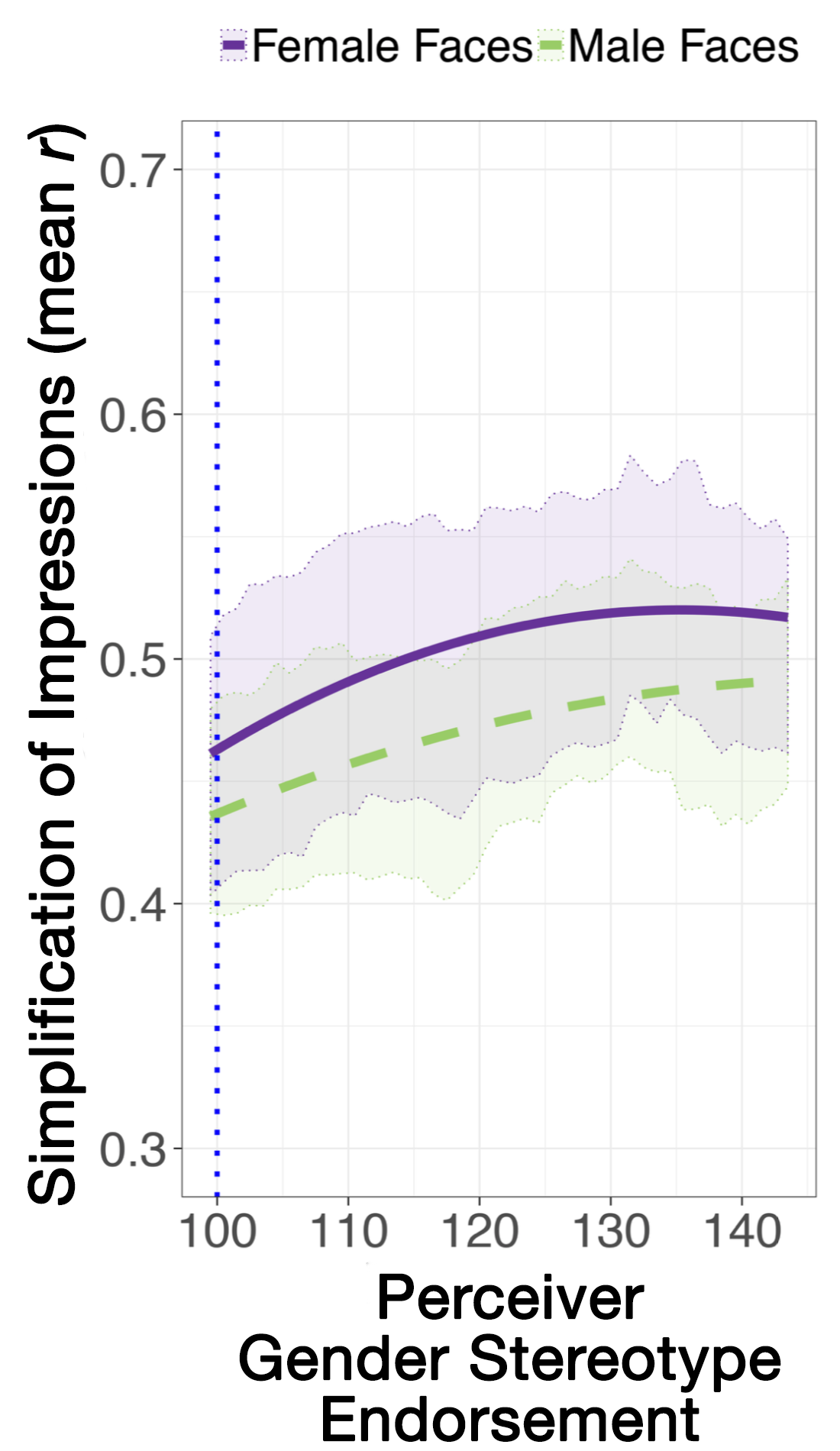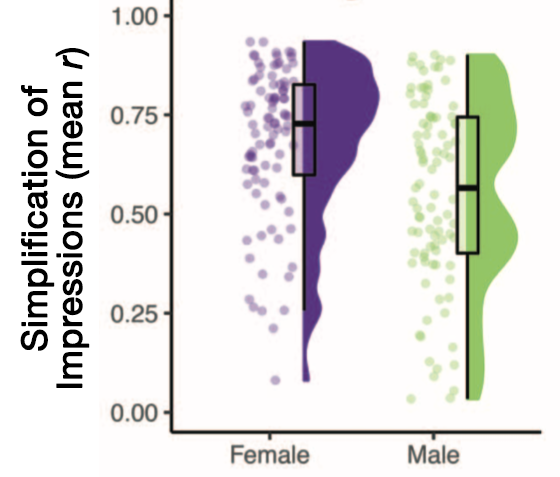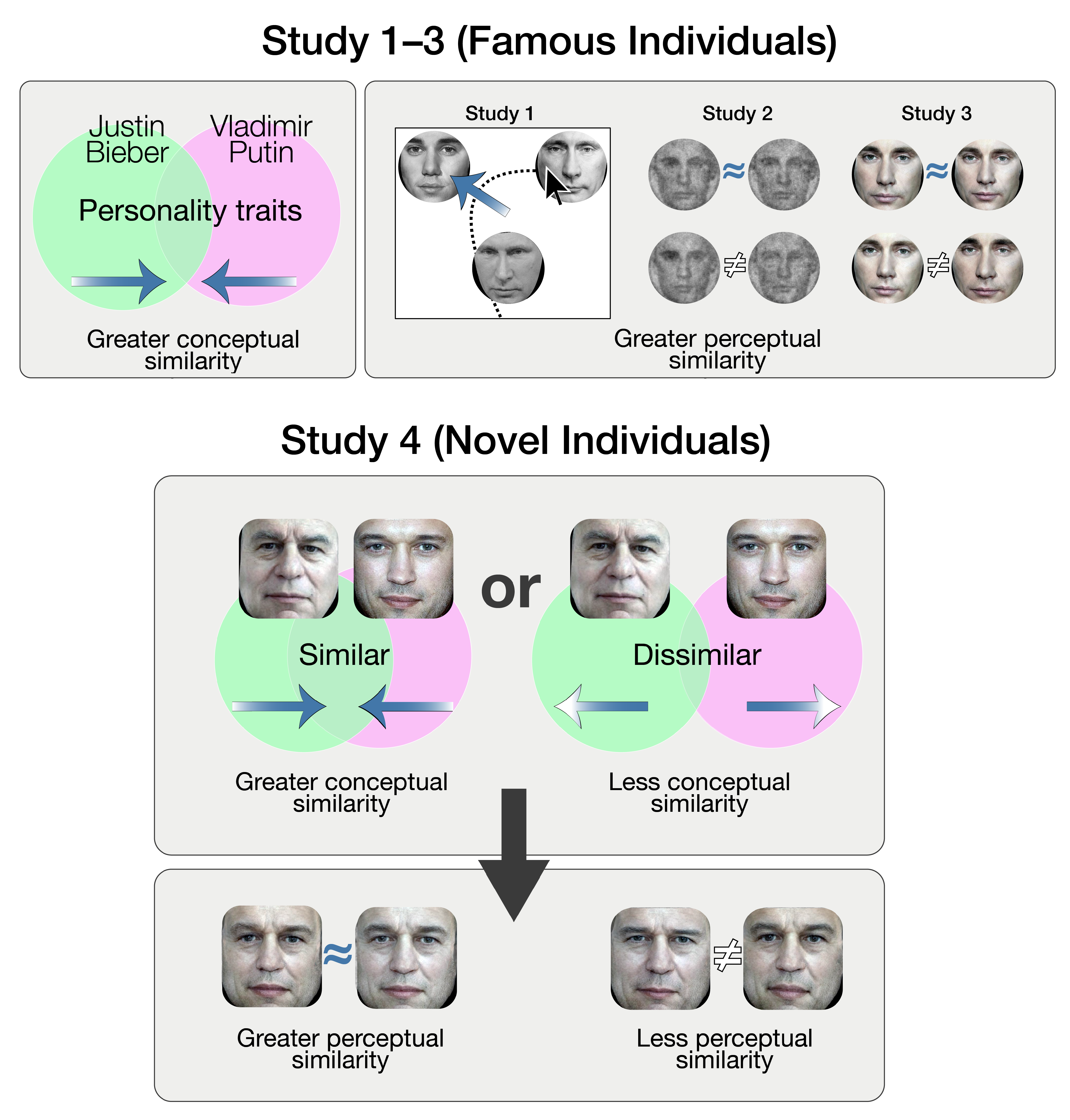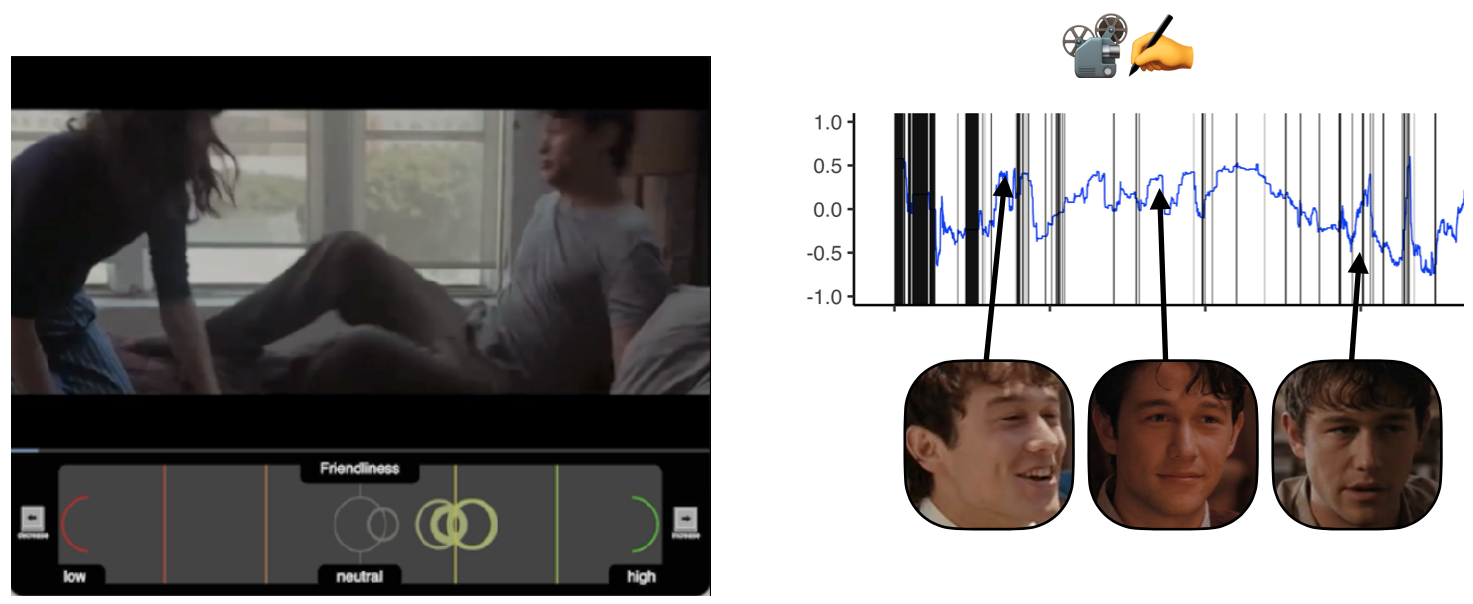DongWon Oh studies how subjective human perceptions of the social world emerge, influenced by stereotypes, acquired knowledge, and cultural context. DongWon's investigation employs various methodologies including experiments, data-driven computational modeling, multivariate analysis, and eye-tracking. His work spans from decoding implicit social evaluations to understanding individual variations in person perception and exploring the dynamic nature of impression formation.
DongWon is an Assistant Professor in the Department of Psychology at the National University of Singapore (NUS), with recent recognitions such as a 2024 APS Rising Star Award and a 2024 SESP Fellowship. At NUS, he directs MAP Lab (Multi-Sociocontextual Action and Perception Lab). Prior to his present role, he was a PhD student at Princeton (advisor: Alex Todorov) and then a postdoc at New York University and Columbia University (advisor: Jon Freeman).
DongWon is an Assistant Professor in the Department of Psychology at the National University of Singapore (NUS), with recent recognitions such as a 2024 APS Rising Star Award and a 2024 SESP Fellowship. At NUS, he directs MAP Lab (Multi-Sociocontextual Action and Perception Lab). Prior to his present role, he was a PhD student at Princeton (advisor: Alex Todorov) and then a postdoc at New York University and Columbia University (advisor: Jon Freeman).
RESEARCH
My research explores the fascinating world of social and person perception, focusing on how we form impressions of others and how these impressions are shaped by various factors including stereotypes, cultural context, and individual experiences. By combining insights from social psychology, vision science, and cultural psychology, and emplo
ying advanced computational methods, I aim to provide a comprehensive understanding of the complex processes involved in social cognition. I investigate three interconnected themes:
Together, these lines of research aim to advance our theoretical and practical understanding of social perception processes. My ultimate goal is to contribute to academic knowledge and to propose effective strategies for addressing social biases and improving interpersonal relationships in our increasingly diverse and connected world.
ying advanced computational methods, I aim to provide a comprehensive understanding of the complex processes involved in social cognition. I investigate three interconnected themes:
- Uncovering Hidden Biases in Social Perception
- Cross-Cultural Variability in Person Perception
- Dynamic Nature of Person Perception
Together, these lines of research aim to advance our theoretical and practical understanding of social perception processes. My ultimate goal is to contribute to academic knowledge and to propose effective strategies for addressing social biases and improving interpersonal relationships in our increasingly diverse and connected world.
Uncovering Hidden Biases in Social Perception
My work employs data-driven computational modeling to reveal hidden biases in social judgments that are often difficult to articulate or measure through traditional methods. For instance, we've uncovered a concealed masculinity bias in competence judgments of faces (Oh et al., 2019, Psych Sci) and identified a phenomenon of 'impression compression' in perceptions of female faces (Oh et al., 2019, JEP: General).
![]()
![]()
[1] People have more simplified impressions of women than of men. In this plot, the level of impression simplification is indexed by the level of all pairwise correlations across specific trait impressions (e.g., impression of likeability). Each dot represents the level of correlations between a pair of impression ratings (e.g., correlation between the impression of likeability and the impression of dominance across all participants). (from Oh et al., 2020 J Exp Psychol: Gen)
[2] The level of impression simplification (how different individual impressions were differentiated, e.g., between ‘trustworthy’ impressions and ‘unhappy’ impressions, were predicted by participants’ level of gender stereotype endorsement. The more one endorsed the gender stereotypes (”women are on average more emotional than men are”), the more simplified their face-based impressions for others were. (from Oh et al. 2020 J Exp Psychol: Gen)
These studies demonstrate how computational modeling can reveal subtle yet pervasive biases in social perception that traditional methods might miss. This approach opens up new avenues for understanding the nuanced ways in which social biases operate and potentially inform interventions to mitigate their effects.
Related work:
Oh, D., Buck, E. A., & Todorov, A. (2019). Revealing hidden gender biases in competence impressions from faces. Psychological Science, 30(1), 65-79.
Oh, D., Dotsch, R., Porter, J. M., & Todorov, A. (2019). Gender biases in first impressions from faces: Empirical studies and computational models. Journal of Experimental Psychology: General, 149(2), 323-342.


[2] The level of impression simplification (how different individual impressions were differentiated, e.g., between ‘trustworthy’ impressions and ‘unhappy’ impressions, were predicted by participants’ level of gender stereotype endorsement. The more one endorsed the gender stereotypes (”women are on average more emotional than men are”), the more simplified their face-based impressions for others were. (from Oh et al. 2020 J Exp Psychol: Gen)
These studies demonstrate how computational modeling can reveal subtle yet pervasive biases in social perception that traditional methods might miss. This approach opens up new avenues for understanding the nuanced ways in which social biases operate and potentially inform interventions to mitigate their effects.
Related work:
Oh, D., Buck, E. A., & Todorov, A. (2019). Revealing hidden gender biases in competence impressions from faces. Psychological Science, 30(1), 65-79.
Oh, D., Dotsch, R., Porter, J. M., & Todorov, A. (2019). Gender biases in first impressions from faces: Empirical studies and computational models. Journal of Experimental Psychology: General, 149(2), 323-342.
Cultural and Individual Variability in Person Perception
My research explores how both external cultural factors and internal individual differences shape mental representations of personality traits and social categories. Through large-scale, cross-cultural studies, we've found that perceptions of facial information are rooted in region-specific associations between personality traits, reflecting profound cultural influences on social cognition (Oh et al., 2022, Psych Sci).
Beyond cultural influences, we've also investigated how individual-level factors shape impression formation. Our work has revealed people's tendency to project their own personality trait organization onto others (Oh et al., under review), demonstrating how self-concepts influence perceptions of others. This research highlights the importance of considering both cultural context and individual differences in understanding social cognition.
Related Work:
Oh, D., Martin, J. D., & Freeman, J. B. (2022). Personality across world regions predicts variability in the structure of face impressions.Psychological Science, 33(8), 1240–1256.
Oh, D., Tan, N., Moner, F., Hong, R., & Teo, H. M. (under review). Self-other mirroring in personality structure.
Beyond cultural influences, we've also investigated how individual-level factors shape impression formation. Our work has revealed people's tendency to project their own personality trait organization onto others (Oh et al., under review), demonstrating how self-concepts influence perceptions of others. This research highlights the importance of considering both cultural context and individual differences in understanding social cognition.
Related Work:
Oh, D., Martin, J. D., & Freeman, J. B. (2022). Personality across world regions predicts variability in the structure of face impressions.Psychological Science, 33(8), 1240–1256.
Oh, D., Tan, N., Moner, F., Hong, R., & Teo, H. M. (under review). Self-other mirroring in personality structure.
Dynamic Nature of Person Perception
My work investigates how unique encounters and experiences can reshape core processes in person perception. We've shown that when individuals discover shared personality traits between strangers, they often perceive their faces as more similar than their actual physical resemblances (Oh et al., 2021, Cognition). This finding illuminates how person knowledge can influence even basic face perception processes.

Knowledge of a person’s personality can bias perception of a face’s identity toward an alternate identity that is not ostensibly related. For example, if Vladimir Putin and Justin Bieber (above) have more similar personalities in your mind, then they visually appear more similar to you as well. Further, when you learn two novel individuals are similar in their personalities (below), you remember their faces as more similar to each other (compared to when you learn the two individuals were dissimilar in their personalities). (from Oh et al., 2021 Cognition)
Current projects extend this line of research to real-time social interactions, examining how impressions form and evolve during actual conversations. By incorporating measures of perceiver personality, existing stereotypes, and various communication channels, we aim to create comprehensive models of dynamic person perception in interpersonal contexts.

Using a continuous rating paradigm, participants altered their trait judgments over time as they watch naturalistic interactions between other individuals. Participants considerably changed their impressions of each character as they learned more about these individuals, but there was a high level of consensus across participants in how they changed their impressions of each character over time. The impressions of each character were tracked in multiple brain regions.
Related Work:
Oh, D., Walker, M., & Freeman, J. B. (2021). Person knowledge shapes face identity perception. Cognition, 217, 104889.
PUBLICATIONS
Copies of these articles are for individual, non-commercial use only.
Journal Articles
Martinez, J. E., Oh, D., & Todorov, A. (2024). Immigration documentation statuses evoke racialized faceism in mental representations. Scientific Reports, 14, 10673. [Paper] [Preregistration/Data]
Oh, D., Wedel, N. N., Labbree, B. P., & Todorov, A. (2023). Trustworthiness judgments without the halo effect: A data-driven computational modeling approach. Perception, 52(8), 590–607. doi:10.1177/03010066231178489 [Paper] [Preprint] [Data/Stimuli/Code]
Oh, D., Martin, J. D., & Freeman, J. B. (2022). Personality across world regions predicts variability in the structure of face impressions. Psychological Science, 33(8), 1240-1256. doi:10.1177/09567976211072814 [Paper] [Preprint] [Data]
Avery, J. J., Oh, D., Feldman, L., Cooper, R., & Cooper, J. (2022) Criminal stereotypes of Muslim and Arab Americans: How standards of proof can attenuate the effects of jurors' extralegal considerations. Journal of Legal Studies, 51(1). doi:.10.1086/717848 [Paper]
Oh, D., Walker, M., & Freeman, J. B. (2021). Person knowledge shapes face identity perception. Cognition, 217(104889). doi:10.1016/j.cognition.2021.104889 [Paper] [Preprint] [Data/Stimuli/Code]
Avery, J. J., Oh, D., & Cooper, J. (2021). Race and perceived immorality in stereotypes of criminal subtypes. Basic and Applied Social Psychology, 1-12. doi:10.1080/01973533.2021.1931220 [Paper] [Data]
Jones, B. C., DeBruine, L. M., Flake, J. K., . . . Oh, D., et al. (2021). To which world regions does the valence-dominance model of social perception apply? (Registered Report). Nature Human Behaviour, 5, 159-169. doi:10.1038/s41562-020-01007-2 [Paper] [Preprint] [Data/Code]
Oh, D., Dotsch, R., Porter, J., & Todorov, A. (2020). Gender biases in impressions from faces: Empirical studies and computational models. Journal of Experimental Psychology: General, 149(2), 323-342. doi:10.1037/xge0000638 [Paper] [Preprint] [Data] [Stimuli]
Oh, D., Shafir, E., & Todorov, A. (2020). Economic status cues from clothes affect perceived competence from faces. Nature Human Behaviour, 4, 287–293. doi:10.1038/s41562-019-0782-4 [Paper] [Preprint] [Data] [Stimuli]
Oh, D., Grant-Villegas, N., & Todorov, A. (2020). The eye wants what the heart wants: Females’ preference in male faces are related to partner personality preference. Journal of Experimental Psychology: Human Perception and Performance, 46(11), 1328–1343. doi:10.1037/xhp0000858 [Paper] [Preprint] [Data/Stimuli/Code]
Ferrari, C., Oh, D., Labbree, B. P., & Todorov, A. (2020). Learning the affective value of people: More than affect-based mechanisms. Acta Psychologica, 203(1030112), 1–10. doi:10.1016/j.actpsy.2020.103011 [Paper] [Data/Stimuli]
Oh, D., Buck, E. A., & Todorov, A. (2019). Revealing hidden gender biases in competence impressions of faces. Psychological Science, 30(1), 65-79. doi:10.1177/0956797618813092 [Paper] [Preprint] [Data/Stimuli]
Oh, D., Dotsch, R., & Todorov, A. (2019). Contributions of shape and reflectance information to social judgments from faces. Vision Research, 165, 131–142. doi:10.1016/j.visres.2019.10.010 [Paper] [Preprint] [Data/Stimuli/Code]
Preprints
Martinez, J. E., Oh, D., & Todorov, A. (2022). Immigrant faceism: documentation statuses evoke racialized mental representations. PsyArXiv. doi:10.31234/osf.io/xb62n [Preprint] [Preregistration]
Martinez, J. E., Oh, D., & Todorov, A. (2022). Mental representations of immigrants encode racialized expectations of socio-structural positions. PsyArXiv. doi:10.31234/osf.io/cvhze [Preprint]
Book Chapter
Todorov, A., & Oh, D. (2021). The structure and perceptual basis of social judgments from faces. In B. Gawronski (Ed.), Advances in Experimental Social Psychology (Vol. 63, pp. 189-245). Cambridge, MA: Academic Press. [Paper] [Preprint]
Selected Conference Presentations
Oh, D., & Mai, K.
(February 2024). Stereotype counteractive
self-presentation through attire. Poster to be presented at the Society of Personality and
Social Psychology Annual Convention. San Diego, CA.
Oh, D., Vartiainen, H., & Freeman, J.B. (February 2023). Racial biases affect the visual representation of objects. Single Paper Symposium talk at the Society of Personality and Social Psychology Annual Convention (chairs: Wiswall M. and D. Oh). Atlanta, GA.
Oh, D., Vartiainen, H., Amodio, D, & Freeman, J.B. (May 2022). Racial biases in neural representation underlying object identification. Poster presented at the 2022 Social and Affective Neuroscience Conference. Virtual Conference. [Poster]
Oh, D., Martin, D. J., & Freeman, J. B. (February 2022). Personality across world regions predicts variability in the structure of face impressions. Symposium talk at the Society of Personality and Social Psychology Annual Convention (chairs: D. Oh and J. B. Freeman). San Francisco, CA. [Presentation Video] [Slides]
Oh, D., Walker, M., Freeman, J. B. (Feb 2021). Person knowledge shapes facial identity perception. 2021 Society of Personality and Social Psychology Annual Convention. Virtual conference [Poster]
Oh, D., & Freeman, J. B. (Feb 2020) Person knowledge shapes facial identity perception. 2020 Society of Personality and Social Psychology Annual Convention. New Orleans, LA [Poster]
Oh, D., Buck, E. A., Dotsch, R., Porter, J. M., & Todorov, A. (February 2020). Gender biases in face-based impressions. 2020 Society of Personality and Social Psychology Annual Convention. New Orleans, LA [Symposium talk]
Oh, D., Dotsch, R., Porter, J. M., Buck, E. A., & Todorov, A. (March 2018). Revealing gender biases in first impressions. 2018 University of West Australia, ARC Centre of Excellence in Cognition and its Disorders, Person Perception Workshop. Perth, Australia [Poster]
Oh, D., Dotsch R, Porter JM, Buck EA, & Todorov A (March 2018). Revealing gender biases in first impressions. 2018 Society of Personality and Social Psychology Annual Convention. Atlanta, GA [Poster]
Oh, D., Dotsch, R., Porter, J. M., & Todorov, A. (October 2016). The structure of female face evaluation is simpler than male face evaluation: Empirical studies and computational models. 2016 NY Social and Affective Neuroscience Meet-Up. New York, NY
Oh, D., Vartiainen, H., & Freeman, J.B. (February 2023). Racial biases affect the visual representation of objects. Single Paper Symposium talk at the Society of Personality and Social Psychology Annual Convention (chairs: Wiswall M. and D. Oh). Atlanta, GA.
Oh, D., Vartiainen, H., Amodio, D, & Freeman, J.B. (May 2022). Racial biases in neural representation underlying object identification. Poster presented at the 2022 Social and Affective Neuroscience Conference. Virtual Conference. [Poster]
Oh, D., Martin, D. J., & Freeman, J. B. (February 2022). Personality across world regions predicts variability in the structure of face impressions. Symposium talk at the Society of Personality and Social Psychology Annual Convention (chairs: D. Oh and J. B. Freeman). San Francisco, CA. [Presentation Video] [Slides]
Oh, D., Walker, M., Freeman, J. B. (Feb 2021). Person knowledge shapes facial identity perception. 2021 Society of Personality and Social Psychology Annual Convention. Virtual conference [Poster]
Oh, D., & Freeman, J. B. (Feb 2020) Person knowledge shapes facial identity perception. 2020 Society of Personality and Social Psychology Annual Convention. New Orleans, LA [Poster]
Oh, D., Buck, E. A., Dotsch, R., Porter, J. M., & Todorov, A. (February 2020). Gender biases in face-based impressions. 2020 Society of Personality and Social Psychology Annual Convention. New Orleans, LA [Symposium talk]
Oh, D., Dotsch, R., Porter, J. M., Buck, E. A., & Todorov, A. (March 2018). Revealing gender biases in first impressions. 2018 University of West Australia, ARC Centre of Excellence in Cognition and its Disorders, Person Perception Workshop. Perth, Australia [Poster]
Oh, D., Dotsch R, Porter JM, Buck EA, & Todorov A (March 2018). Revealing gender biases in first impressions. 2018 Society of Personality and Social Psychology Annual Convention. Atlanta, GA [Poster]
Oh, D., Dotsch, R., Porter, J. M., & Todorov, A. (October 2016). The structure of female face evaluation is simpler than male face evaluation: Empirical studies and computational models. 2016 NY Social and Affective Neuroscience Meet-Up. New York, NY
HOME
TEACHING
My teaching approach focuses on inclusivity and critical engagement. I am currently teaching undergraduate courses at the National University of Singapore: PL3105, PL3551, and PL3282F. If you have any questions about these courses, email me directly at my NUS account with an email subject that starts with the correponding course number (i.e., PL3105, PL3551, or PL3282F).
PL3105 Social Psychology
Course Descriptions
This course introduces you to methods, findings, and theories of social psychology – the scientific study of social feelings, thought, and behavior. In the first half of the course, we begin by examining how people think, feel, and know (or fail to know) their own self; then we explore how people understand the thoughts, feelings, and behaviors of other people. In the second half of the course, we examine what happens when people interact: how groups influence individuals, how individuals influence groups, and how members of groups relate to one another. We conclude by exploring the personal and global impact of social psychology.
Intended Learning Outcomes
Ultimately, we hope that this course helps you not only gain scientific knowledge of social psychology but also develop a critical eye for good vs. bad science. An ability to judge good science goes a long way in the era of misinformation and polarization.
This course introduces you to methods, findings, and theories of social psychology – the scientific study of social feelings, thought, and behavior. In the first half of the course, we begin by examining how people think, feel, and know (or fail to know) their own self; then we explore how people understand the thoughts, feelings, and behaviors of other people. In the second half of the course, we examine what happens when people interact: how groups influence individuals, how individuals influence groups, and how members of groups relate to one another. We conclude by exploring the personal and global impact of social psychology.
Intended Learning Outcomes
- Describe key theories and empirical research in social psychology.
- Explain how research in social psychology is conducted.
- Identify various social forces that influence human behavior in everyday settings, such as home, school, and work.
- Devise ways to apply social-psychological knowledge to improve real-world outcomes.
Ultimately, we hope that this course helps you not only gain scientific knowledge of social psychology but also develop a critical eye for good vs. bad science. An ability to judge good science goes a long way in the era of misinformation and polarization.
PL3282F Lab in Social Perception
Course Description
This lab course, focused on social perception within social psychology, introduces methodologies for studying the cognitive processes of social perception. Students, working in small groups, will identify a research question, conduct a relevant experiment, and compile a laboratory report on social perception. The course emphasizes hands-on, empirical research experience, culminating in a group project applying theoretical knowledge into practice.
Intended Learning Outcomes
This lab course, focused on social perception within social psychology, introduces methodologies for studying the cognitive processes of social perception. Students, working in small groups, will identify a research question, conduct a relevant experiment, and compile a laboratory report on social perception. The course emphasizes hands-on, empirical research experience, culminating in a group project applying theoretical knowledge into practice.
Intended Learning Outcomes
- Understand the key concepts and theories in the field of social perception.
-
Identify a research question within the area of social perception.
-
Apply appropriate methodologies to conduct an experiment and gather data related to social perception.
- Analyze collected data and report research findings clearly and accurately in the format of a laboratory report.
PL3515 Undergraduate Research Opportunity Program (UROP)
Course Descriptions
You will help with an ongoing project in the lab. This project explores the complexities of variability in social perception, a dynamic process that shapes our understanding and evaluation of people and our environment. The process involves instant judgments about newly met individuals, adjusting impressions based on emotional events, and even associations with objects that remind us of someone. Given that each individual's unique beliefs and experiences heavily influence social perception, variability is the norm rather than the exception. However, existing research mainly draws connections between variability in concepts, such as beliefs about individuals and social groups, and variability in social perception, leaving the roots of these variabilities largely unexplored.
In this course, each student will be assigned multpile tasks, tailored to their academic interests and skill set. These tasks may include reading and summarizing scholarly articles, participating in online and offline studies and sharing their experiences, creating and checking study materials such as web content or images, attending weekly lab meetings, or developing and modifying studies through various platforms, including basic coding for statistical analysis.
You will help with an ongoing project in the lab. This project explores the complexities of variability in social perception, a dynamic process that shapes our understanding and evaluation of people and our environment. The process involves instant judgments about newly met individuals, adjusting impressions based on emotional events, and even associations with objects that remind us of someone. Given that each individual's unique beliefs and experiences heavily influence social perception, variability is the norm rather than the exception. However, existing research mainly draws connections between variability in concepts, such as beliefs about individuals and social groups, and variability in social perception, leaving the roots of these variabilities largely unexplored.
In this course, each student will be assigned multpile tasks, tailored to their academic interests and skill set. These tasks may include reading and summarizing scholarly articles, participating in online and offline studies and sharing their experiences, creating and checking study materials such as web content or images, attending weekly lab meetings, or developing and modifying studies through various platforms, including basic coding for statistical analysis.
HOME
MEDIA COVERAGE
Social Media
Reddit r/science (2020) In a split second, clothes makes a person more competent in the eyes of others, suggests new study
Cited work:
Oh, D., et al. (2020). Economic status cues from clothes affect perceived competence from faces. Nature Human Behaviour, 4: 287–293.
News Articles
Chicago Booth Review (2022) Why reading faces is a dangerous game
Cited work:
Oh, D., et al. (2019). Revealing hidden gender biases in competence impressions of faces. Psychological Science, 30(1): 65-79.
Chicago Booth Review (2021) Why stereotypically ‘feminine’ faces are so attractive . . . on men
Cited work:
Oh, D., et al. (2020). The eye wants what the heart wants: Females’ preference in male faces are related to partner personality preference. Journal of Experimental Psychology: Human Perception and Performance, 46(11): 1328–1343.
Neuroscience News (2021) People look alike if we think they have similar personalities
Cited work:
Oh, D., et al. (2021). Person knowledge shapes face identity perception. Cognition, 217(104889).
Business Insider (2020) When you get to know people, do you let appearances guide you? Most likely, say US psychologists who have made an illuminating attempt to study the phenomenon
Cited work:
Oh, D., et al. (2020). Economic status cues from clothes affect perceived competence from faces. Nature Human Behaviour, 4: 287–293.
Chicago Booth Review (2021) How first Impressions work against women
Cited work:
Oh, D., et al. (2019). Revealing hidden gender biases in competence impressions of faces. Psychological Science, 30(1): 65-79.
Oh, D. et al. (2020). Gender biases in impressions from faces: Empirical studies and computational models. Journal of Experimental Psychology: General, 149(2), 323-342
Forbes (2019) ‘Rich’ or ‘poor’ clothing affects split-second decisions about competence
Cited work: Oh, D., et al. (2020). Economic status cues from clothes affect perceived competence from faces. Nature Human Behaviour, 4: 287–293.
Big think (2019) Stylish men are perceived as 'significantly more competent
Cited work:
Oh, D., et al. (2020). Economic status cues from clothes affect perceived competence from faces. Nature Human Behaviour, 4: 287–293.
phy.org (2019) In a split second, clothes make the man more competent in the eyes of others
Cited work:
Oh, D., et al. (2020). Economic status cues from clothes affect perceived competence from faces. Nature Human Behaviour, 4: 287–293.
The Independent (2018) Masculine faces seen as more competent than female ones
Cited work:
Oh, D., et al. (2019). Revealing hidden gender biases in competence impressions of faces. Psychological Science, 30(1): 65-79.
ScienceDaily (2018) Gender bias sways how we perceive competence in faces
Cited work:
Oh, D., et al. (2019). Revealing hidden gender biases in competence impressions of faces. Psychological Science, 30(1): 65-79.
